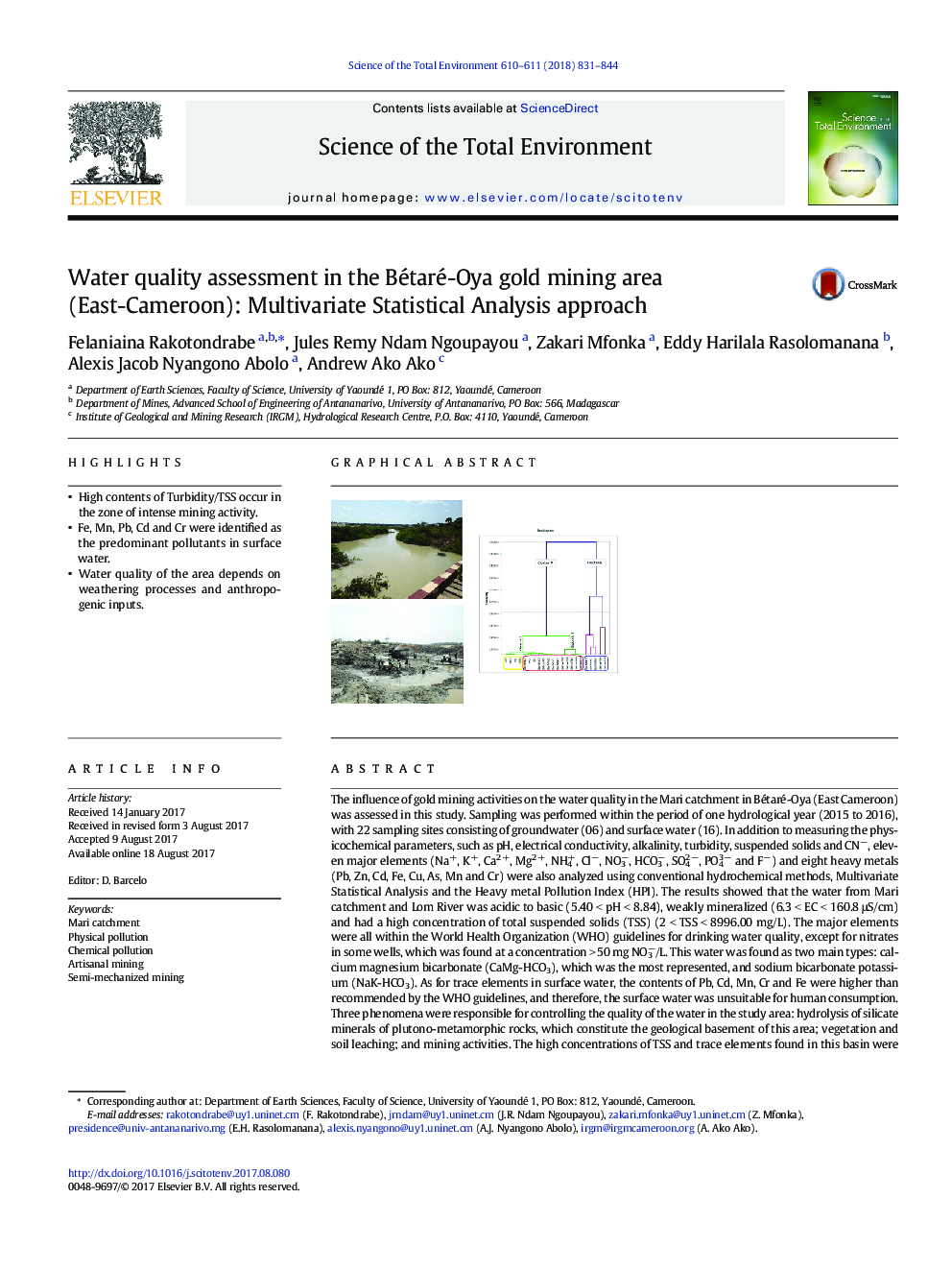| کد مقاله | کد نشریه | سال انتشار | مقاله انگلیسی | نسخه تمام متن |
|---|---|---|---|---|
| 5750250 | 1619692 | 2018 | 14 صفحه PDF | دانلود رایگان |

- High contents of Turbidity/TSS occur in the zone of intense mining activity.
- Fe, Mn, Pb, Cd and Cr were identified as the predominant pollutants in surface water.
- Water quality of the area depends on weathering processes and anthropogenic inputs.
The influence of gold mining activities on the water quality in the Mari catchment in Bétaré-Oya (East Cameroon) was assessed in this study. Sampling was performed within the period of one hydrological year (2015 to 2016), with 22 sampling sites consisting of groundwater (06) and surface water (16). In addition to measuring the physicochemical parameters, such as pH, electrical conductivity, alkalinity, turbidity, suspended solids and CNâ, eleven major elements (Na+, K+, Ca2 +, Mg2 +, NH4+, Clâ, NO3â, HCO3â, SO42 â, PO43 â and Fâ) and eight heavy metals (Pb, Zn, Cd, Fe, Cu, As, Mn and Cr) were also analyzed using conventional hydrochemical methods, Multivariate Statistical Analysis and the Heavy metal Pollution Index (HPI). The results showed that the water from Mari catchment and Lom River was acidic to basic (5.40 < pH < 8.84), weakly mineralized (6.3 < EC < 160.8 μS/cm) and had a high concentration of total suspended solids (TSS) (2 < TSS < 8996.00 mg/L). The major elements were all within the World Health Organization (WHO) guidelines for drinking water quality, except for nitrates in some wells, which was found at a concentration > 50 mg NO3â/L. This water was found as two main types: calcium magnesium bicarbonate (CaMg-HCO3), which was the most represented, and sodium bicarbonate potassium (NaK-HCO3). As for trace elements in surface water, the contents of Pb, Cd, Mn, Cr and Fe were higher than recommended by the WHO guidelines, and therefore, the surface water was unsuitable for human consumption. Three phenomena were responsible for controlling the quality of the water in the study area: hydrolysis of silicate minerals of plutono-metamorphic rocks, which constitute the geological basement of this area; vegetation and soil leaching; and mining activities. The high concentrations of TSS and trace elements found in this basin were mainly due to gold mining activities (exploration and exploitation) as well as digging of rivers beds, excavation and gold amalgamation.
98
Journal: Science of The Total Environment - Volumes 610â611, 1 January 2018, Pages 831-844